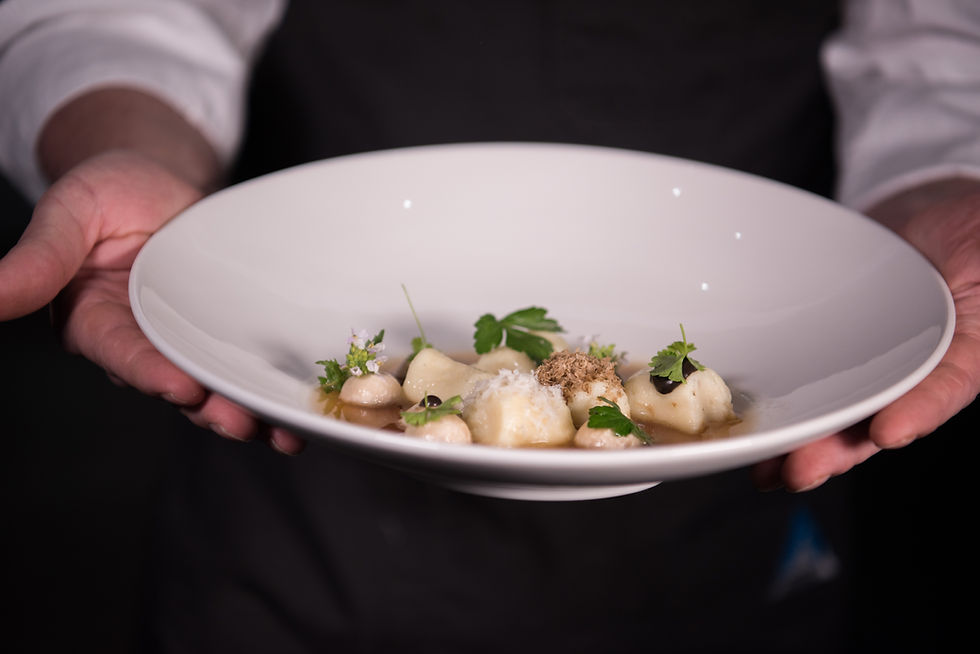Food waste solutions: one carrot nibble at a time
- The Culinary Vegetable Institute

- Feb 18, 2021
- 2 min read
Using every part of a vegetable, from its root to its tip, is practically a religion at the Culinary Vegetable Institute.

Executive Chef Jamie Simpson adamantly maintains a rigid, strict minimal-food-waste methodology in his kitchen, creating culinary components from ingredients others might discard. He says his adherence to the practice opens multiple unexpected culinary possibilities.
So, don’t toss out those carrot tops just yet.
Jamie Demonstrates How to Reduce Food Waste
Watch him dissect a carrot and you’ll witness a steady hand with surgical precision. Rather than chopping off a hunk of carrot to separate it from its green fronds, the mere tip of Chef Jamie’s knife nibbles a miniscule whisper of orange.
“We use the entire vegetable with no waste,” Chef Jamie says,” generally anything that usually gets thrown away ─ carrot tops, fava bean stems.”
So, what does he do with those tops and stems? Chef Jamie says he incorporates them in the same ways he would parsley, basil or other herbs, such as herb-infused oils, rich purees thickened and sweetened with turnip or parsnip, and even pesto.
Pickling and preserving excess vegetables is yet another way to use the entire vegetable and greatly reduce food waste. Shelves in the Culinary Vegetable Institute’s cool, darkened basement cellar hold a multitude of jars filled with future culinary potential.
Composting Food Waste at the Culinary Vegetable Institute
But even the best intentions are surely bound to produce some waste, right? The answer is yes. But even peelings and inedible parts of vegetables are reserved for compost, giving them usefulness beyond the kitchen.
So, next time, be mindful before carelessly tossing carrot tops into the bin. Instead, stop and consider the possibilities they might add to your plates ─ flavor, color, dimension, depth and interest.
Chef Jamie holds up that itty-bitty nibble of carrot.
“That’s the goal.”



コメント